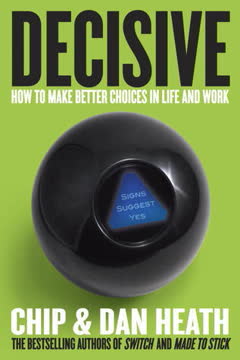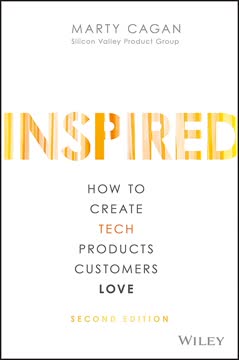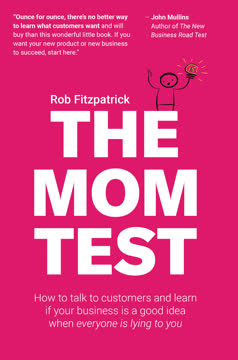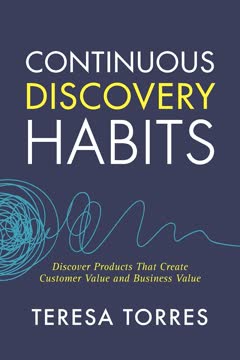重点摘要
1. 任务理论:理解客户需求的革命性方法
任务理论提供了一个框架,用于(i)分类、定义、捕捉和组织所有客户的需求,以及(ii)将客户定义的绩效指标(以期望结果陈述的形式)与待完成的任务联系起来。
创新的范式转变。 任务理论通过关注客户试图完成的基本任务,而不是产品或人口统计数据,彻底改变了公司对待创新的方式。这种视角使公司能够:
- 系统地识别所有客户需求
- 理解客户用来衡量成功的指标
- 开发更有效地解决未满足需求的解决方案
稳定性和普遍性。 该理论认为,任务在时间和地域上保持稳定,为长期创新战略提供了可靠的基础。这种稳定性与产品和技术的不断变化形成对比,使公司能够:
- 创建持久的价值主张
- 开发全球相关的解决方案
- 在产品周期中持续创新
2. 任务需求框架:分类和定义客户需求
虽然任务描述了客户试图执行的整体任务,但结果是客户用来衡量成功和价值的指标。
全面的需求分析。 任务需求框架提供了一种结构化的方法来理解和分类客户需求,包括:
- 核心功能任务
- 与核心功能任务相关的期望结果
- 相关任务
- 情感和社会任务
- 消费链任务
- 买家的财务期望结果
可操作的见解。 通过将客户需求分解为这些不同的类别,公司可以:
- 开发更有针对性和有效的解决方案
- 解决客户需求的功能和情感方面
- 改善从购买到处置的整个客户体验
3. 结果驱动创新(ODI):将任务理论付诸实践
结果驱动创新是一种战略和创新过程,使公司能够构思和发明新的解决方案,以更好和/或更便宜地帮助客户完成任务。
系统的创新过程。 ODI将任务理论转化为一个实用的、逐步的方法论,包括:
- 定义客户
- 定义待完成的任务
- 发现客户需求
- 寻找机会细分
- 定义价值主张
- 进行竞争分析
- 制定创新战略
- 瞄准隐藏的增长机会
- 制定市场战略
- 制定产品战略
数据驱动的决策。 通过遵循这一过程,公司可以:
- 减少创新中的猜测
- 使产品开发与客户需求保持一致
- 提高市场成功的概率
4. 发现客户期望结果:成功创新的关键
期望结果陈述准确解释了客户在完成每一步核心功能任务时如何衡量成功和价值。
精确的需求定义。 期望结果陈述被精心构建,以可衡量、可操作的格式捕捉客户需求。这些陈述:
- 遵循特定结构:改进方向 + 绩效指标 + 控制对象 + 情境说明
- 与解决方案无关,关注潜在需求而非具体产品特性
- 为创新努力提供明确的目标
全面的任务分析。 通过绘制整个任务过程并捕捉每一步的期望结果,公司可以:
- 发现以前被忽视的创新机会
- 开发解决整个任务而不仅仅是部分任务的解决方案
- 创建更全面和有效的产品或服务
5. 基于结果的细分:发现隐藏的市场机会
发现具有独特未满足需求的客户细分的唯一方法是围绕未满足需求对市场进行细分。
超越传统细分。 基于结果的细分超越了人口统计或心理统计分类,识别基于未满足需求的群体。这种方法:
- 揭示具有独特机会的隐藏细分
- 提供更准确的市场动态图景
- 使创新战略更有针对性和有效性
数据驱动的市场分析。 该过程包括:
- 捕捉所有客户需求作为期望结果陈述
- 进行定量研究以优先考虑需求
- 使用因子和聚类分析识别具有相似未满足需求的细分
- 描述细分以理解导致未满足需求的潜在因素
6. 任务增长战略矩阵:选择正确的创新战略
新产品和服务在市场上获胜的关键在于它们是否能更好(更快、更可预测、更高产)和/或更便宜地帮助客户完成任务。
战略创新框架。 增长战略矩阵指导公司根据市场条件选择最合适的创新战略:
- 差异化战略:更好但更贵
- 主导战略:更好且更便宜
- 颠覆性战略:更差但更便宜
- 离散战略:更差且更贵(利基情况)
- 持续战略:略好或略便宜
知情的战略选择。 通过了解市场中未满足和过度满足的细分,公司可以:
- 选择最有效的增长战略
- 使产品开发与市场机会保持一致
- 提高成功创新的可能性
7. 实施ODI:转变组织以实现可预测的创新成功
建立一个结果驱动的组织最好分三个阶段进行:I. 了解客户的待完成任务,II. 发现市场中的隐藏机会,III. 使用新的客户见解推动增长
组织转型。 实施ODI包括:
- 创建内部ODI实践者团队
- 建立创新卓越中心
- 将任务理论和ODI实践应用于选定市场
分阶段实施方法。 三阶段过程使公司能够:
- 深入了解客户任务和需求
- 通过定量研究发现隐藏的市场机会
- 应用见解通过改进的市场和产品战略推动增长
通过遵循这一方法,组织可以系统地转变其创新过程,从而实现更可预测和成功的结果。
最后更新日期:
FAQ
What's "Jobs to be Done: Theory to Practice" about?
- Focus on Innovation: The book by Anthony W. Ulwick focuses on transforming innovation from a chance-based endeavor to a predictable process using the Jobs-to-be-Done theory.
- Outcome-Driven Innovation: It introduces Outcome-Driven Innovation (ODI), a process that links customer needs to product development, ensuring that new products meet real market demands.
- Framework for Success: The book provides a framework for understanding customer needs and creating products that fulfill those needs better and/or more cheaply than competitors.
- Practical Application: It offers practical steps and case studies to help companies implement the Jobs-to-be-Done theory in their innovation processes.
Why should I read "Jobs to be Done: Theory to Practice"?
- Improve Innovation Success: The book claims an 86% success rate for innovation projects using its methods, compared to the industry average of 17%.
- Structured Approach: It provides a structured approach to understanding customer needs, which can lead to more successful product development.
- Real-World Examples: The book includes case studies from companies like Microsoft and Bosch, demonstrating the practical application of its theories.
- Comprehensive Guide: It serves as a comprehensive guide for companies looking to improve their innovation processes and achieve growth.
What are the key takeaways of "Jobs to be Done: Theory to Practice"?
- Customer-Centric Innovation: Focus on what jobs customers are trying to get done, rather than on the products themselves.
- Outcome-Driven Process: Use customer-defined metrics to guide product development and innovation strategies.
- Segmentation and Strategy: Discover underserved market segments and tailor strategies to meet their specific needs.
- Predictable Success: By understanding and addressing customer needs, companies can predictably create successful products.
What is the Jobs-to-be-Done theory?
- Core Concept: The theory posits that customers "hire" products to get specific jobs done, focusing on the desired outcomes rather than the product itself.
- Stable Over Time: Jobs are stable over time, unlike products or technologies, which change and evolve.
- Universal Application: The theory applies across different geographies and industries, as people everywhere have similar jobs they need to get done.
- Foundation for Innovation: It serves as a foundation for developing products that truly meet customer needs.
How does Outcome-Driven Innovation (ODI) work?
- Customer Metrics: ODI begins with identifying the metrics customers use to measure success in getting a job done.
- Quantitative Research: It employs unique quantitative research methods to analyze markets and uncover hidden opportunities.
- Segmentation and Strategy: The process includes segmenting markets based on unmet needs and formulating strategies to address them.
- High Success Rate: ODI claims a high success rate by aligning product development with customer-defined metrics.
What are the types of customer needs in the Jobs-to-be-Done Needs Framework?
- Core Functional Job: The primary task or goal the customer is trying to accomplish.
- Desired Outcomes: Metrics customers use to measure success in executing the core functional job.
- Related Jobs: Other functional jobs that are important to the customer while executing the core job.
- Emotional and Social Jobs: How customers want to feel or be perceived while getting the job done.
What is the Jobs-to-be-Done Growth Strategy Matrix?
- Five Strategies: The matrix outlines five growth strategies: Differentiated, Dominant, Disruptive, Discrete, and Sustaining.
- Market Positioning: It helps companies understand how to position their products based on whether they get a job done better and/or more cheaply.
- Targeting Segments: The matrix guides companies in targeting underserved or overserved market segments.
- Strategic Decision-Making: It provides a framework for making strategic decisions about product development and market entry.
What are some case studies mentioned in "Jobs to be Done: Theory to Practice"?
- Microsoft: Improved its Software Assurance offering by aligning it with customer needs, leading to increased revenue and customer satisfaction.
- Bosch: Successfully entered the North American circular saw market by addressing 14 underserved outcomes, resulting in a top-selling product.
- Kroll Ontrack: Used ODI to dominate the electronic document discovery market by focusing on customer jobs and outcomes.
- Arm & Hammer: Achieved over 30% revenue growth by realigning its market strategy around customer outcomes.
How can companies become ODI practitioners?
- Training and Tools: Companies can train internal teams to become ODI practitioners, using tools and templates provided by Strategyn.
- Project Execution: Practitioners are responsible for executing ODI projects, from defining customer needs to formulating market strategies.
- Skill Requirements: Practitioners need skills in qualitative and quantitative research, data analysis, and strategic planning.
- Organizational Transformation: By adopting ODI, companies can transform their innovation processes and achieve predictable success.
What is the role of quantitative research in ODI?
- Data Collection: Quantitative research gathers statistically valid data to inform market and product strategies.
- Segmentation Analysis: It helps discover outcome-based segments with unique unmet needs.
- Competitive Analysis: Quantitative data is used to evaluate how well competing products satisfy customer needs.
- Opportunity Identification: The research identifies which customer needs are underserved, guiding innovation efforts.
What are the best quotes from "Jobs to be Done: Theory to Practice" and what do they mean?
- "Innovation cannot be left to chance." This emphasizes the need for a structured, predictable approach to innovation.
- "People buy products and services to get a job done." Highlights the core principle of Jobs-to-be-Done theory, focusing on customer needs rather than products.
- "Outcome-Driven Innovation replaces luck with a predictable process." Stresses the reliability and effectiveness of the ODI process in achieving innovation success.
- "Knowing all the customer’s needs changes everything." Underlines the importance of understanding customer needs for successful product development.
How does "Jobs to be Done: Theory to Practice" redefine the language of innovation?
- Common Language: The book introduces a common language for innovation, centered around customer jobs and outcomes.
- Customer-Centric Terms: It redefines traditional innovation terms from a customer-centric perspective.
- Framework and Definitions: Provides clear definitions and frameworks for understanding and discussing innovation.
- Organizational Alignment: A common language helps align teams and departments around a shared understanding of customer needs and innovation goals.
评论
《待完成的工作》评价褒贬不一。一些人称赞其创新的实用方法,强调客户需求而非解决方案。然而,许多人批评这本书过于自我推销、内容重复且缺乏具体的实施工具。读者认可核心概念,但认为执行力不足。几位评论者指出,这本书感觉像是为作者的咨询服务做广告。尽管有些人认为该框架有价值,但也有人认为它只是重新包装了现有的产品开发智慧。
Similar Books














